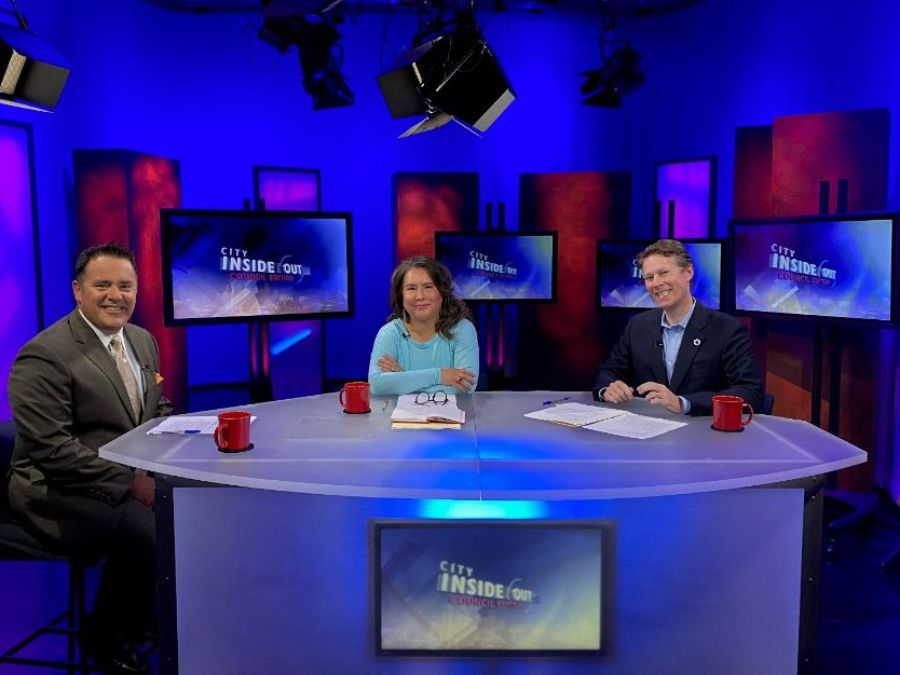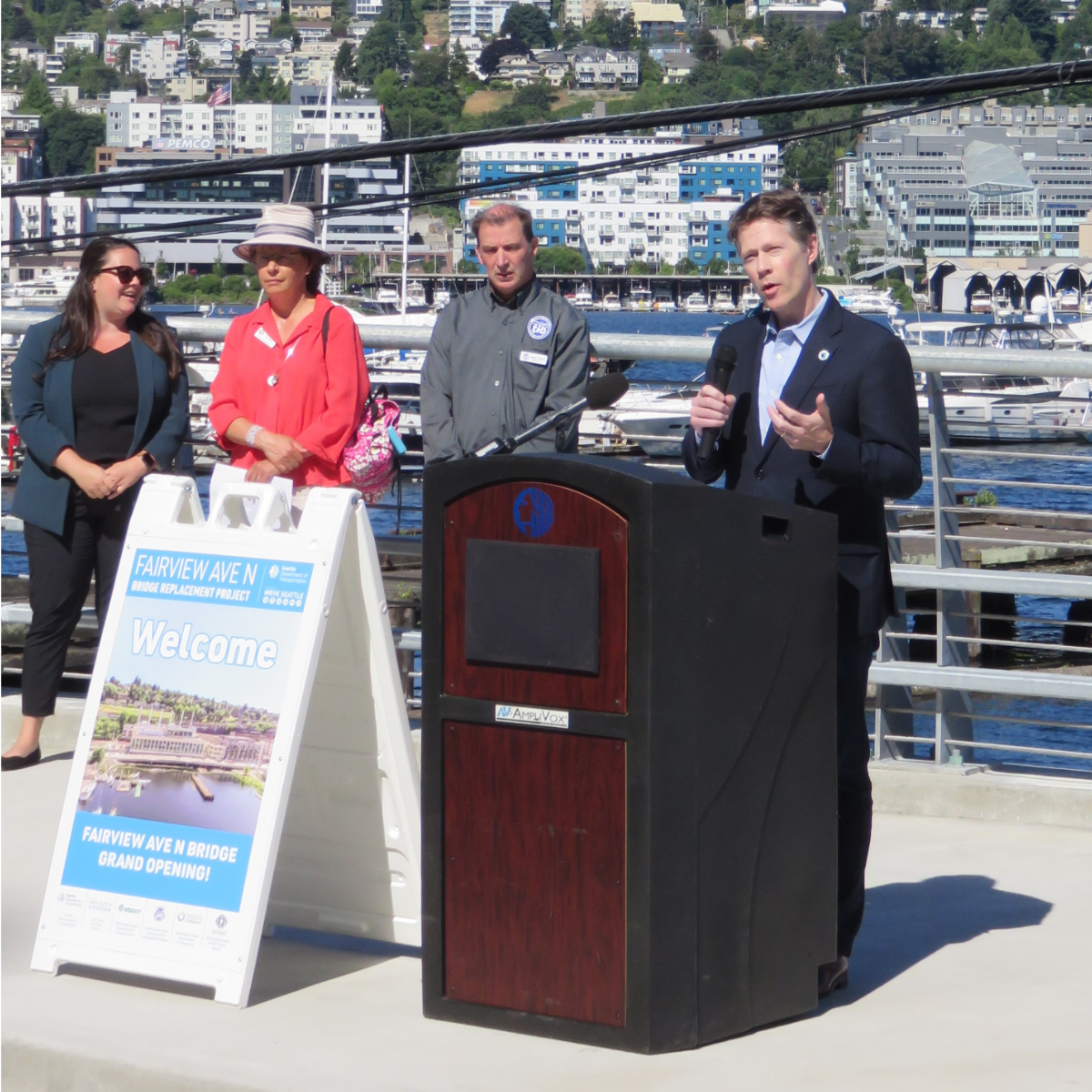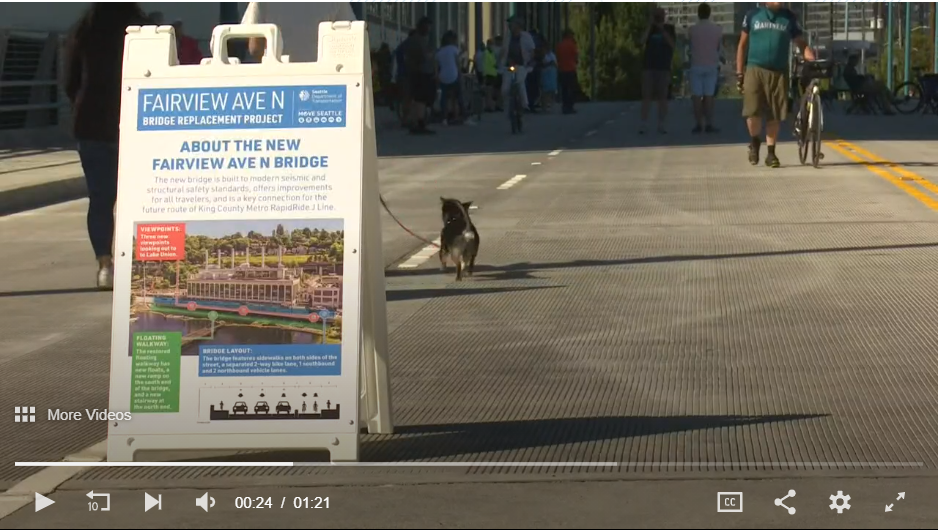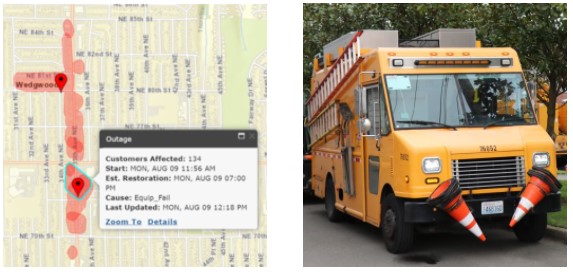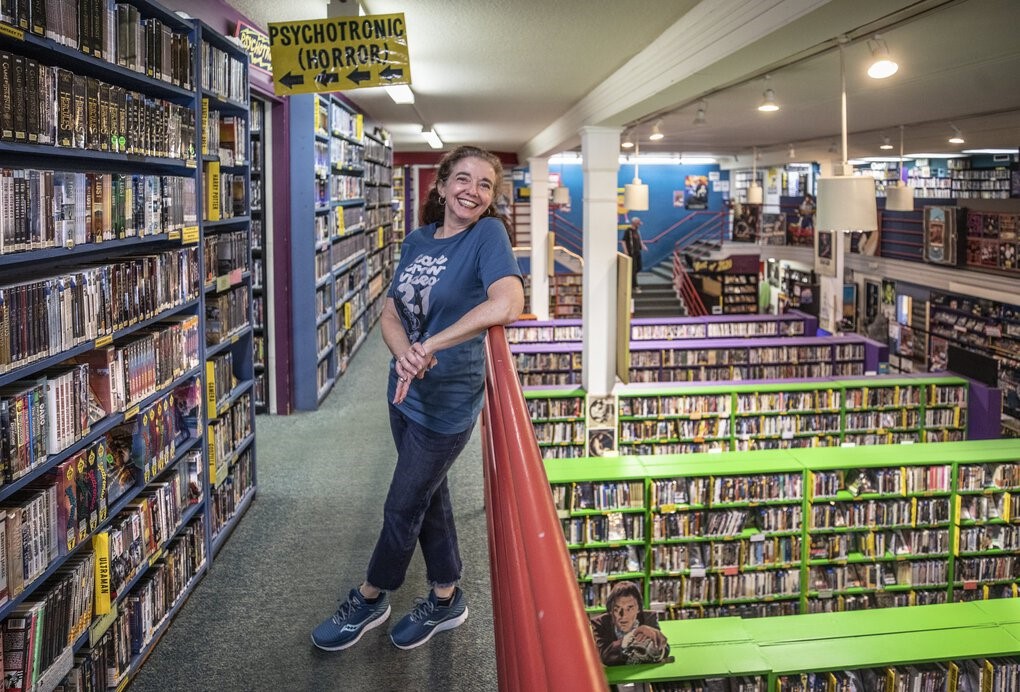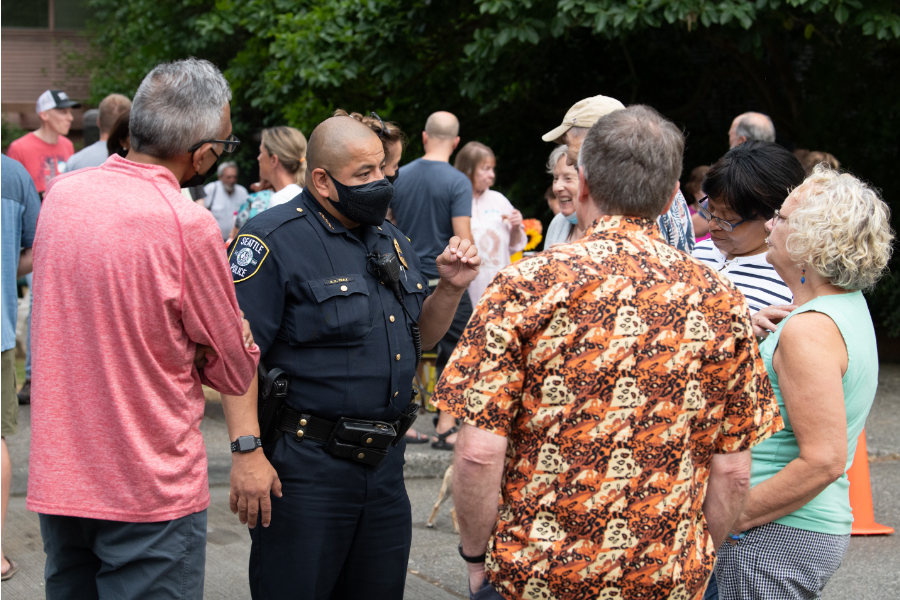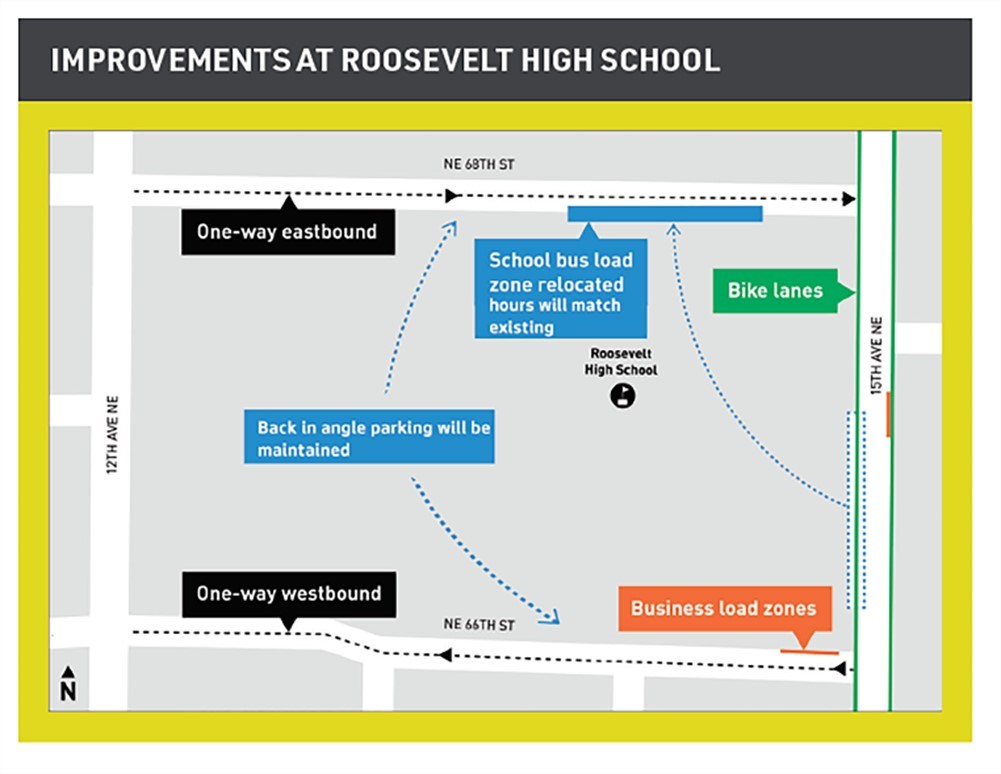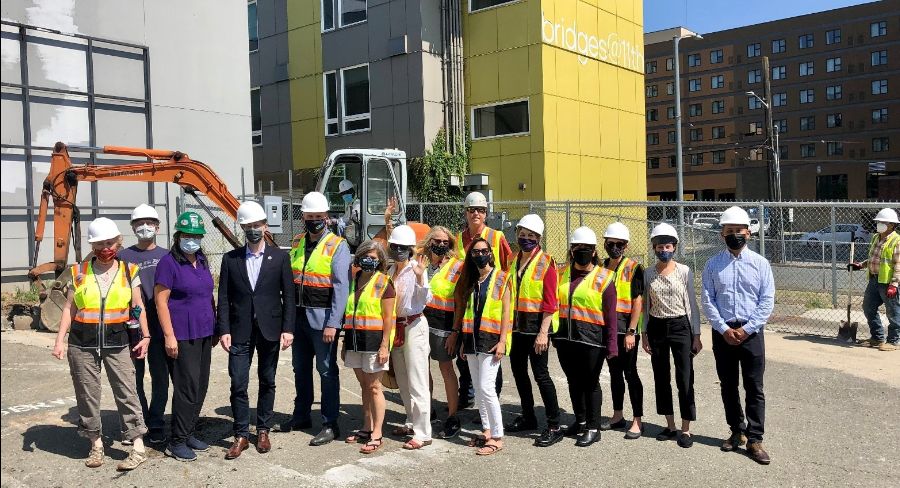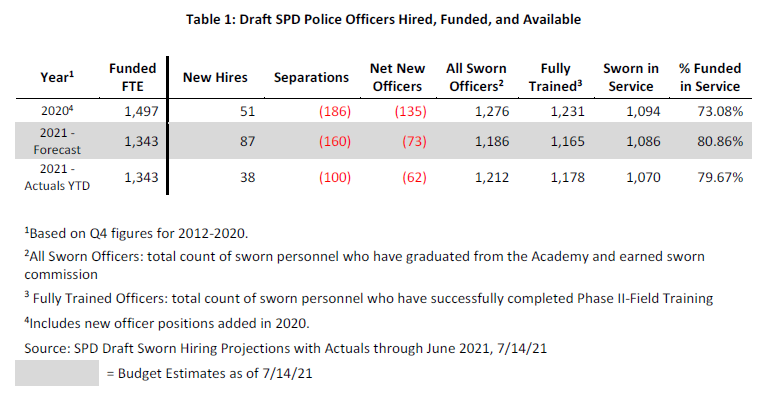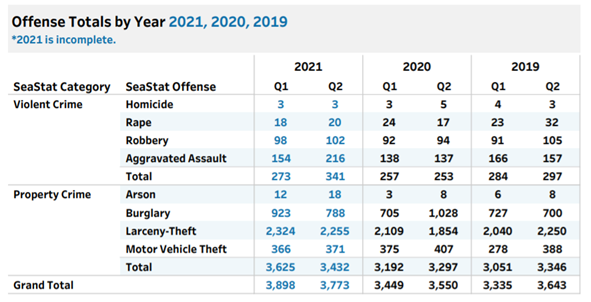Rebuilding Bridges, Appreciating Officers, and More in D4
August 2021
Friends and Neighbors,
As we approach the end of summer and look forward to the fall season, we’ll strive to beat back the COVID resurgence, help children return to school, diplomatically debate our city’s $6.5 billion annual budget, and recommit ourselves to solving the Seattle challenges intensified by the pandemic. While the City Council is officially on a two-week “recess” (which just means no meetings of the Council), I’ll still be working hard for the 20 neighborhoods of our dynamic District 4. Our next City Council meeting is September 13. I hope you find this newsletter from our office informative and helpful. Thank you.
See whether we answered your questions on Seattle Channel
Last month, reporter Brian Callanan interviewed Councilmember Debora Juarez and me for his show on the award-winning Seattle Channel. Check out the video by CLICKING HERE. (photo by Team Juarez).
IN DISTRICT 4
Rebuilding Bridges and Reopening Fairview Avenue Bridge
Everyone seemed happy about the re-opening of the Fairview Avenue bridge connecting Eastlake and beyond to our downtown job centers! We are eager to see more attention to our City’s bridges. In the photo, standing 2nd from the left (and wise to wear a hat in the blazing sun) is fellow District 4 leader Kathryn Gardow whose work includes the Washington State Public Works Board, which generously funded a large portion of this bridge project. (photo by Eastlake community leader Jules James)
The beauty of our city is shaped by its many waterways and ravines. Seattle’s tremendous topography means we rely on bridges to connect us, to support all modes of travel, and to keep our entire economy moving.
This month I was able to stand with community leaders and construction workers on a rebuilt bridge we can all celebrate!
Thank you to Sam Zimbabwe, our talented leader of the Seattle Department of Transportation (SDOT). I would also like to thank the neighbors and businesses who have endured nearly two years of detours during the re-construction of this bridge. We also appreciate the multiple organizations providing the money needed to replace the bridge, including the Washington State Public Works Board which generously funded a large portion of this bridge project.
The Fairview Avenue Bridge is a vital North-South arterial connecting Eastlake (and several other neighborhoods in our Council District) to thousands of jobs provided by employers anchored in our downtown. Maintaining basic infrastructure like this bridge is required for restarting the engine of our economy.
Seattle has over 100 bridges and many are 50 to 100 years old. I’ve been calling on City Hall to prioritize our aging bridges, so they stay safe AND stay open. This followed the independent audit I ordered for all City-owned bridges last year. That audit shows we have a lot more work to do to prioritize and fix our fragile bridges. The audit identified the old Fairview Bridge as a high priority for replacement. The bridge was over 70 years old and rated in poor condition. The wooden posts holding up the western half of the old bridge were decaying, and the concrete under the eastern half of the bridge was cracked. The new bridge, however, is built to modern earthquake standards. It is safe and sturdy to carry freight, transit, cars, bikes – everyone.
As you read this, the Mayor’s Office is crafting next year’s budget proposal which she will deliver to this City Council in just a few weeks (Sept 24). After the emergency closure of the West Seattle Bridge followed by the audit I ordered for the rest of our aging bridges, everyone who relies on these vital connections is counting on her budget proposal to hear that wake-up call and dedicate additional funding for Seattle’s bridge infrastructure.
CLICK HERE to read more about the Fairview Avenue Bridge on SDOT’s website.
MONTLAKE BRIDGE: On the northern entrance to Eastlake, we know our aging University Bridge is bearing the brunt of the traffic detoured from the Montlake Bridge as our State government dutifully repairs their aging bridge. While the increased traffic congestion will be with us though August, I commend the Washington State DOT for prioritizing safety and asset management and would like to see a similarly strong dedication of resources to repair bridges owned by the City. For more on the Montlake Bridge repair, CLICK HERE.
Seattle City Light Pledges Fix for Power Outages in Wedgwood
The Wedgwood neighborhood has repeatedly experienced power outages along the 35th Avenue NE corridor. As the District Councilmember (south of NE 85th Street) and Chair of the City’s Transportation & Utilities Committee, I was able to amplify the voices of those in the neighborhood and to encourage Seattle City Light to prioritize a sustainable solution. I very much appreciate the City Light workers who have been repairing each outage and we thank them in advance for this upcoming, longer term fix. While fixing the problem will, ironically, require temporary outages to replace the aging equipment, this effort should fix this recurring problem with a reliable and sustainable solution to avoid future outages. Construction is starting this month and will last approximately two months. [UPDATE from November 22, 2021: Seattle City Light reports that completion of this project could, unfortunately, be delayed to January 2022.] Please visit Seattle City Light’s website for more information.
Scarecrow Video in the University District: Like No Other Place in the World
Key leader of the nonprofit Scarecrow Video on Roosevelt Way NE across from the U District Food bank near NE 50th Street (photo by Seattle Times)
This past week, I visited our firefighters to thank them at the U District fire station, which is located on the same block as the legendary Scarecrow Video. This reminded me that this special treasure trove of movies was featured earlier this month in the Seattle Times in an article titled, “How Seattle’s Scarecrow Video plans to share its vast library nationwide.” For the article and how you can help Scarecrow to thrive, CLICK HERE. As the article says, Scarecrow Video is like no other place in the world – and we’re proud their home is District 4.
West Green Lake Way North Will Open to Car Traffic

My office and the office of Councilmember Strauss (whose Council District 6 includes all of Green Lake) received many complaints about the Durkan Administration’s temporary closure of that portion of West Green Lake Way N. Fortunately, SDOT recently announced they will reopen it for 2-way vehicle traffic and provide a 2-way bike lane connection this Fall. For the July 29 article in the Seattle PI with a helpful overview and links to SDOT’s official recent statement, CLICK HERE. In the meantime, alternate routes include N 50th Street.
National Night Out: Preventing Crime as a Community
As part of the annual “National Night Out,“ I attended several crime prevention block parties in North Seattle, including this one visited by our Police Chief Adrian Diaz in the Maple Leaf neighborhood.
I enjoyed visiting with hundreds of constituents at more than 10 locations across District 4 during “National Night Out” on Tuesday, August 3, including Bryant, Ravenna, Wedgwood, the U District, and Maple Leaf. While these annual events were cancelled last year due to the COVID pandemic, they bounced back strong this year, with hundreds of blocks signing up across Seattle. Many thanks to the neighbors for organizing their block parties. Our police department is so short staffed, they were not able to visit most of the locations as they normally do, but the block parties I attended showed a lot of support for officers and the difficult jobs they have. National Night Out strengthens neighborhood connections to create safer communities.
15th Avenue NE Paving Project Continues
Thank you for your patience as SDOT works on completing the 15th Avenue Northeast repaving project which includes upgrading utilities and installing bike lanes near the new Roosevelt light rail station opening this Fall. Unfortunately, SDOT believes they will still be working on 15th Ave NE after the first day of school at Roosevelt High. However, they will have completed the work on all three of the other roads surrounding the school. Also, they will have completed all other major work such as drainage, lights, crosswalks and sidewalks, parking, and signage by the first day of school to reduce impacts. In the end, we believe it will improve travel connections and safety.
Seattle Parks and Recreation Plans to Begin Phased Reopening in Early September
Our Seattle Parks and Recreation Department has announced plans to reopen more community centers which had been closed due to the pandemic.
The Parks Department will be ramping up public services and programming at recreation facilities across Seattle beginning September 7, 2021. This ramp-up will include reopening most public pools (for lap swim, independent aquatic fitness and limited aquatic exercise classes), community center programs (lifelong recreation, specialized programs, etc.), and teen programs that support academic success and enrichment. These programs are in addition to the preschool and childcare programs already operating in community centers.
To see the full ramp-up schedule of pools and teen programs CLICK HERE. Please note that all facilities will continue to follow any current COVID-19 restrictions through the state, city or King County Public Health. The current guidance requires all staff and visitors to mask up upon entry regardless of vaccination status.
Art at Magnuson Park
The Magnuson Park Gallery is open and in-person (with masks) and now features a vibrant exhibit of art from the Kang-O’Higgins studio of the Gage Academy of Art. Enjoy diverse artwork from their current students, alumni, and teacher assistants. Gallery Hours (through August 27th): Thursdays & Fridays, 3pm-7pm and Saturdays & Sundays,11am-4pm. Location: Magnuson Park’s Building 30 West, 7448 63rd Avenue NE, Seattle, WA 98115 (note: the NE 74th Street entrance is closed due to construction).
TRANSPORTATION AND UTILITIES COMMITTEE
Apply to the Seattle Transit Board or Seattle Bike Board!
As Transportation Chair, I help to approve appointees to transportation-related boards. Your city government is committed to promoting diversity in boards and commissions, and we encourage Black, Indigenous, and other people of color; people with disabilities; bicultural and bilingual people; seniors; and LGBTQ people to apply. We have an ongoing process of appointments as terms end and vacancies occur, so that we create opportunities for others interested in participating.
The Bike Advisory Board has 12 volunteer members who serve two-year terms and they are currently recruiting three new members. CLICK HERE to learn more and apply by August 27.
The Transit Advisory Board also has 12 volunteer members with openings for three new members. CLICK HERE to learn more and apply by August 27.
I believe we should manage our transportation systems to efficiently move the most people and goods in the most environmentally friendly ways possible. To encourage more collaboration (rather than competition for attention and resources among individual modes of travel), I am hopeful we can increase coordination among the array of advisory boards and am thankful Seattle has dedicated volunteers striving to achieve our region’s transportation goals.
HOMELESSNESS AND HOUSING
New Tiny Home Village Finally Breaks Ground
Breaking ground August 18 to start installing the new Tiny Home Village called ”Rosie’s” at NE 45th Street and Roosevelt Way NE with the nonprofit Low Income Housing Institute (LIHI), Councilmember Pedersen with his Legislative Aide Cara Kadoshima Vallier, and Sound Transit — with support from the business improvement area (University District Partnership), community leaders, and volunteers. Thank you to the construction workers for getting started so the 36 tiny homes (coming soon) will have clean water and electricity!
Addressing the homelessness crisis with the urgency it deserves, I personally intervened to help resolve the outstanding issues so the City could finalize a first-of-its-kind lease with Sound Transit to use one of their sites in the University District for a new Tiny Home Village called “Rosie’s.” Councilmember Lewis and I then expedited the legislation through the City Council, with the Mayor agreeing to sign it immediately on August 9.
Addressing the homelessness crisis with the urgency it deserves, I personally intervened to help resolve the outstanding issues so the City could finalize a first-of-its-kind lease with Sound Transit to use one of their sites in the University District for a new Tiny Home Village called “Rosie’s.” Councilmember Lewis and I then expedited the legislation through the City Council, with the Mayor agreeing to sign it immediately on August 9.
The Council already authorized the funds for this tiny house village during our budget approvals last November. The nonprofit Low Income Housing Institute (known as “LIHI”) and their volunteers have completed building these tiny homes for the University District, which I was able to visit in their factory recently. So the last step was to get everyone to approve this first-of-its-kind lease, so we can get more people off the streets, into their own space — and onto a positive future.
The site is approximately 18,000 square feet and can fit approximately 36 tiny house structures. The lease would be for approximately 2 ½ years. After hosting the Tiny Home Village, the construction of new permanent affordable housing will occur on this site in our University District.
With the lease finalized, LIHI was able to hire their contractor for the trenching needed to provide fresh water, sewage removal, and electricity to the site – which can take 6 to 8 weeks to complete.
One of the reasons the lease was carefully crafted is because it will serve as a template for future partnerships, not only in Seattle, but also the region to accelerate our response to homelessness. I want to thank Sound Transit for making this land located near robust transit available to us to address homelessness in our area.
For the August 10 press release from Sound Transit, CLICK HERE.
For details and updates on this Tiny Home Village, CLICK HERE.
Mandatory Housing Affordability (MHA): A Grand Bargain Mainly for For-Profit Developers
I am thankful for the recent Seattle Times’ article on Seattle’s Mandatory Housing Affordability (MHA) program because the reporter objectively assessed the data and interviewed a broad range of stakeholders, not just supporters of the “grand bargain.” Based on the 2020 figures from the City, the MHA program appears to be a grand bargain mainly for developers who get the ability to build more while skirting the full cost of providing the affordable housing originally promised. The first iteration of MHA has been a disappointment with the vast majority of developers choosing to write a check to avoid building any affordable housing on site in the neighborhoods that need them.
The failure of MHA to result in inclusionary low-income housing is not the fault of developers whose profit motive will maximize whatever opportunities are allowed. The shortcoming is on City government policymakers, especially if improvements to the MHA program are avoided by City Hall.
One of the easiest ways to improve the MHA program is by increasing the fees so that developers are incentivized to produce more low-income housing on site, serving households earning no more than 60% of the area median income. Rather than an indirect tinkering with land use code definitions and acquiescing to for-profit developer requests for additional blanket upzone giveaways, let’s do what’s actually needed: increase the fees so that growth pays for growth and we produce more low-income housing faster.
It’s also important to consider measures to prevent (or at least mitigate) the demolition of existing affordable housing. Too often the city government approves large-scale changes without first putting in place protection measures to prevent displacement of existing residents and small businesses.
For the Seattle Times article, CLICK HERE.
Supporting Trees at Yesler Terrace
The City Council adopted my amendment to the large-scale, mixed-income Yesler Terrace redevelopment project to make sure tree replacements benefit low-income areas that typically have less tree canopy. To read my amendment, CLICK HERE. I am pleased to report that this provision establishes a policy of prioritizing tree conservation and replacement in communities most in need of more trees. The amendment was negotiated with the Seattle Housing Authority along with expertise from our City Council’s Central Staff and the Seattle Department of Construction and Inspections (SDCI). I appreciate the collaboration as well as the result.
Time to End the “Wild West” of Tree Cutting by Licensing and Registering Arborists?

illustration by Frits Ahlefeldt
Many constituents complain that it seems like the “Wild West” of chainsaws in our Emerald City. One of the reasons is that SDCI does not have even basic licensing or registration for tree cutters or arborists. The public doesn’t know who the tree cutters are (without registration) or their qualifications (without licensing) and yet they are paid by developers to decrease our tree canopy for projects approved by your city government. Meanwhile we wait and wait for the Durkan Administration to produce a stronger tree protection ordinance.
Despite the environmental and health benefits of trees in the midst of a climate crisis, the loss of trees—especially large native conifers—has been an increasing problem in Seattle with disproportionate negative impacts for communities of color. Some of these tree losses could be prevented by the basic licensing and registration of arborists. Even a recent $100,000 penalty by the City for removing a large cedar tree doesn’t seem to be sufficient to stop profit-motivated real estate developers and tree cutters from continuing to violate our already weak tree ordinance.
Our City’s Urban Forestry Commission and many tree advocates believe the licensing and registration of arborists could help to maintain a sustainable urban forest that produces health and environmental benefits. While my office continues to encourage the Durkan Administration to produce a stronger tree protection ordinance by this September, we recognize the separate common-sense need for the licensing and registration of tree cutters and arborists.
We appreciate hearing from constituents about possible violations of our City’s existing weak tree ordinance to help us to craft specific policies to protect Seattle’s declining tree canopy. If you become aware of impending removal of large trees—or while it’s happening—please send photos and the location to my office at Alex.Pedersen@seattle.gov.
Email Council to support greater oversight of tree cutters
PUBLIC SAFETY
Need to Approve Mayor Durkan’s Efforts to Stop Alarming Drain of Police Officers
In response to the alarming attrition of officers, the Mayor sent at the end of July a bill and memo to the City Council to deploy $15 million in “salary savings” from our Seattle Police Department to cover a variety of SPD costs , including overtime pay needed due to the record-breaking departure of officers during the past year as well as those projected to leave this year.
I immediately endorsed the proposal from the Mayor and SPD on how to invest those dollars, issuing this statement to the media:
“I commend our Mayor and Police Chief for responding to the surge in gun violence and the alarming loss of police officers by transmitting this sensible safety legislation to the City Council,” said Councilmember Alex Pedersen. “I urge my colleagues on the City Council to embrace these initial public safety solutions by acting swiftly on this legislation ….”
Unfortunately, our City Council Finance Committee chose not to authorize additional recruitment or retention funding at this time. When the bill arrives at the full City Council on September 13, I am hoping there will be consensus on the need to increase efforts for both recruiting new officers and retaining the highly trained ones we already have.
I visited the roll calls of the first, second, and third watches of our North Precinct this past month. I have attended police roll calls and participated in ride-alongs in the past, but these displayed the lowest morale I have ever experienced. This signals to me that the current attrition could be just the tip of the iceberg, unless we do more to retain existing officers.
I appreciated the frank feedback from these frontline workers who put themselves in harm’s way every day for our residents and small businesses. In addition, the exit interviews of departing officers made it painfully clear why so many of them are leaving: the apparent lack of support from many City leaders. Even though I never called for a 50% defunding of the organization, I acknowledge my own part and accountability in contributing to the low morale by not speaking up sooner to support the good and difficult work these professionals do as fellow city government employees working in difficult conditions under the frequently updated laws and protocols approved by government leaders. In short, I encouraged them to stay with Seattle.
I want to acknowledge those constituents who disagree with this approach and have urged me (and all Councilmembers) to reinvest that $15 million to other non-SPD solutions. I probably won’t convince anyone to change their minds here, but I want to try to explain my position. The vast majority of city government’s $6.5 billion budget goes toward helping our residents, especially those who are most vulnerable. Within the $1.6 billion discretionary general fund, about 25% goes toward the police (a higher percentage is often cited, but that higher percentage includes the Fire Department and other offices). The $15 million suddenly available mid-year should not be called “savings” because we need to replenish the lost officers to fulfill our duty under the City Charter Article VI, Section 1 which states, “There shall be maintained adequate police protection in each district of the City.”
For both safety and for our obligations under our City Charter, I believe the record-breaking attrition has become a crisis. Even though I opposed the 50% defund effort that 7 of my colleagues originally pledged in 2020, I have to hold myself accountable for not quickly and assertively articulating the downsides of adopting such slogans that they would have consequences for community safety AND for not sooner encouraging those serving on the Labor Relations Policy Committee to hurry up and work out a police contract that values good officers and boosts employee wellness while ensuring we don’t pay extra for body cameras or allow an arbitration system that could protect misconduct. Protestors have every right to use slogans to crystalize their message, but policymakers have an extra responsibility to synthesize the variety of views and experiences and to consider the practical implementation implications of our statements and votes on legislation.
In his Seattle Times column entitled, “How the City Council left Seattle in a no man’s land on crime,” Danny Westneat concluded, “Seattle plainly needs both: Enough cops to respond to rising violent crime, and more counselors to try to prevent it. This is why ‘re-imagining’ or “defunding” the police was always going to cost more money, not less. It was governing malpractice that the City Council jumped into this brandishing a protest slogan, and Seattle now is paying a price.”
If he could have expanded on his column, I would have pointed out that SPD’s sworn community policing officers help to prevent crime AND that counselors can be used in place of some 9-1-1 responses. It’s complex. All the more reason that policymakers should avoid slogans in the first place.
The federal judge overseeing the police reform consent decree said recently, “The city, the mayor and other elected officials from the City Council need to be constructive, not destructive, to progress. I have seen too much of knee-jerk reaction and not enough forethought. We have to be religious in continuing to reduce bias and disparity, at the same time we need to recognize … there is an essential requirement for public safety.”
The new monitor, Dr. Antonio Oftelie of Harvard, told the court that the department has lost more than 300 officers since 2019, and has been able to replace fewer than 100 of them. The personnel shortage has, for now, essentially ended community policing in the city and sent response times “skyrocketing.” “Much of the training, technology, and review systems implemented under the consent decree cannot be sustained without necessary budget and personnel,” he said, describing SPD as being at an “inflection point.” He continued: “The actions and investments of the city will either tip the department into a deepening crisis, or will lead the department into a future in which it can sustain compliance and build trust in constitutional policing.”
Source: SPD memo to City Council Central Staff, July 23, 2021
Crime Report Statistics
Here are the latest crime report stats from SPD’s official dashboard for the North Precinct (40% of the city, which is north of the ship canal and includes three of the nine Council Districts, including our District 4). These are offense reports taken by a sworn officer or approved by an officer after receiving it online or by phone.
Crime Dashboard from SPD: https://www.seattle.gov/police/information-and-data/crime-dashboard (Note: 2021 in the dashboard includes just the first 7 months of this year. For a rough projection of the entire year of 2021, one could divide the 2021 figures by 7 months and then multiply them by 12.)
Here’s a table that compares crimes reported during the first two quarters of each of the past 3 years:
New Crime Prevention Coordinator approved by Finance Committee
I’m pleased to report that the City Council Finance Committee approved my proposal to add another Crime Prevention Coordinator position to the North Precinct. There were many reasons why my team and I pushed for this additional position: (1) I wanted to be responsive to the many residents and small businesses who suffered the absence of the crime prevention position while it sat vacant for months creating a backlog; (2) at 40% of the City’s geographic area, the North Precinct is more than double the size of any of the other 4 police precincts in the city and is home to 3 Councilmembers; (3) that position shows residents and small businesses practical ways to prevent crime; and (4) they can alert SPD about emerging crime trends that might not be immediately apparent from other data.
Councilmembers Gonzalez, Herbold, and Lewis voted yes while Chair Mosqueda (preferring to consider it during the regular Fall budget process instead), voted No.
Over $70 Million of the $100 Million Commitment to BIPOC Communities Proceeding
Protests demanding racial justice and community-led solutions, especially in Black communities, spread across the United States and internationally after the murder of George Floyd in May 2020.
Mayor Durkan committed to investing $100 million focused on Black, Indigenous, and communities of color to address the systemic harms caused by racist policies and generations of disinvestment and to produce more positive outcomes with programs that prevent harm. The Council allocated additional funding toward various efforts.
The City is providing more than build capacity for 33 organizations working toward community-led solutions to end violence and increase safety in (BIPOC) communities. These investments will support organizations providing an array of programs, services, and upstream investments meant to improve outcomes and contribute to overall community safety and wellbeing.
Last year, the Human Services Department moved quickly to award $4 million to the Seattle Community Safety Initiative, which is building community safety hubs and wraparound services in three Seattle neighborhoods under the leadership of Community Passageways.
The City provided $30 million to a “Equitable Communities Initiative Task Force.
We also await the remaining $30 million through a community-led participatory budgeting process for 2022.
Addressing Gun Violence: $2 Million More for Regional Peacekeepers Collective
Building on recent investments to improve community-led safety and Citywide efforts to reimagine public safety, Mayor Jenny A. Durkan recently announced the City of Seattle will invest $2 million in the King County Regional Peacekeepers Collective pilot program to address the steep rise in gun violence using a public health approach. The City’s investment builds capacity with increased staff and comprehensive support systems for young people at risk of gun violence and their families.
“We know that violence is the result of many failed systems and societal disparities. And because, in many instances, the government for decades shirked responsibility, we are called on at this moment to invest in resources to right the wrongs created by those failed systems,” said Mayor Durkan. “There is no magic wand that will erase violence from the community; however, we know we need a range of solutions as with most complex regional issues. That’s why this investment in the Regional Peacekeepers Collective is so important.”
By investing $2 million over two years, the Regional Peacekeepers Collective will have the necessary funding to add restorative services such as family support specialists, youth and family support services, comprehensive training, and technical assistance. These critical supports will allow the Regional Peacekeepers Collective to deliver the wraparound case management and family-centered engagement that can help disrupt the cycle of gun violence and put them on a path to health and wellbeing. Approximately 200 young people and their families are expected to be supported over the next two years.
“The City of Seattle’s investments in community-led safety efforts to help address the rise in gun violence is critically important,” said Fred Rivara, MD, professor of Pediatrics in the UW School of Medicine. Dr. Rivera is also director of the Firearm Injury & Policy Research Program of the Harborview Injury Prevention and Research Center, a cutting-edge program I helped to fund when I was a Legislative Aide to former Council President Tim Burgess.
“Even with diminished resources, SPD officers have been exhaustively working each and every incident of gun violence,” said Chief Adrian Diaz of the Seattle Police Department. “We have been conducting investigations during which we recovered over 50 guns in 19 different search warrants just a few weeks ago. We are on pace to recover another 1,000 guns this year alone. We need to make sure these guns aren’t in the hands of people who want to harm our community. It’s true, we need to work together to fight this violence. We cannot accept this as a norm for Seattle.”
Triage Response to Provide Alternative to Police Response for Non-Emergencies
Building from the City’s work to reimagine policing and community safety, Mayor Jenny A. Durkan announced a proposal to create a new specialized triage response that will provide an alternative model for some non-criminal 9-1-1 calls and reduce the need for a sworn officer response for some calls. The specialized responses will include professionals that are experts in outreach, behavioral health, and have tangible connections to the communities that they will serve. When at full capacity, this specialized response could respond to the potentially 8,000 – 14,000 non-emergency wellness checks currently handled by sworn officers from our Seattle Police Department.
“Seattle residents expect and deserve a timely 9-1-1 response, and part of reimagining community safety means providing meaningful and effective alternatives to a sworn officer. Building off of the success of the Seattle Fire Department’s Health One model, the new specialized triage response will provide an alternative response to some 9-1-1 calls,” said Mayor Jenny Durkan.
COVID
As Mayor Durkan put it last week, our work to save lives doesn’t happen by accident – it happens by the choices we make. The choices we are making are saving lives. Seattle has one of the highest vaccination rates in the country with approximately 82.5% of residents 12+ who have at least one dose.
We are watching cautiously however as the Delta variant is one of the most dangerous mutations yet, and there are so many in our City and community under the age of 12 who cannot be vaccinated.
We know what works to protect ourselves against this virus: vaccines, masks, testing, and distancing. Vaccines are widely available across Seattle and King County. You can visit visit one of our rapid, accessible, and free testing sites, which are still crucial for preventing the spread of COVID-19 in our communities.
MORE for District 4
Seattle Preschool Program Open for Applications
overwhelmingly approved by Seattle voters in 2014. It is heartening to know that thousands of children are receiving the lifelong benefits that high-quality preschool can deliver. There is a lot of talk about the need for equitable, upstream programs proven to benefit young people so they have positive life outcomes — SPP has been one of the shining examples for years.
Seattle Reads “The Vanishing Half”
On August 9 the Council received a ‘Seattle Reads’ program for 2021. This year, Seattle Public Libraries are featuring a work of fiction entitled “The Vanishing Half” by Brit Bennett.
As many of you know, “Seattle Reads” is our city-wide book group, where people are encouraged to read and discuss the same book as a way of building connections across communities. This year I was especially impressed with SPL’s community partnerships to engage artists, writers, and partners such as Black Heritage Society.
I encourage readers to check out these incredible organizations and attend one of the interesting events the Seattle Public Library has planned associated with this book.
The Seattle Public Library has reopened 23 of 27 libraries. Open hours are currently limited; however, thanks to financial support from the federal government, the Library is restoring staffing systemwide for more open hours this fall.
The branches in District 4 currently open are:
- Fremont Branch (731 N. 35th St.), Open 10 a.m. to 6 p.m. Wednesdays and Saturdays
- Northeast Branch (6801 35th Ave. NE), Open 10 a.m. to 6 p.m. Wednesdays and Fridays; noon to 6 p.m. Sundays
- University Branch (5009 Roosevelt Way NE), Open 10 a.m. to 6 p.m. Thursdays; noon to 6 p.m. Sundays
The Wallingford branch will reopen this fall. This link is the best one for accessing open branches (with days/hours): https://www.spl.org/hours-and-locations.
WE WANT TO HEAR FROM YOU

City Council Meetings on the Internet
Listening: Even though City Council is not currently holding meetings in person in order to follow public health guidelines, you can still follow along by listening on your computer or phone by CLICKING HERE. You can also listen on your phone by calling 253-215-8782.
Commenting: You can also submit public comment by sending an e-mail to me at Alex.Pedersen@seattle.gov or to all 9 Councilmembers at council@seattle.gov.
council@seattle.gov.
Please remember to add “For City Council Meeting” in the comments. Now you can also phone into the meeting to speak directly to the Council live. For the instructions on how to register and call in, CLICK HERE. Sign up begins two hours prior to the meeting start time.
Virtual Meetings with Your Councilmember Pedersen
alex.pedersen@seattle.gov
CLICKING HERE.
We are getting through this together, Seattle!
With gratitude,
Councilmember Alex Pedersen
Seattle City Council, District 4
Email: Alex.Pedersen@seattle.gov
Find It, Fix It
Posted: August 23rd, 2021 under Councilmember Pedersen

